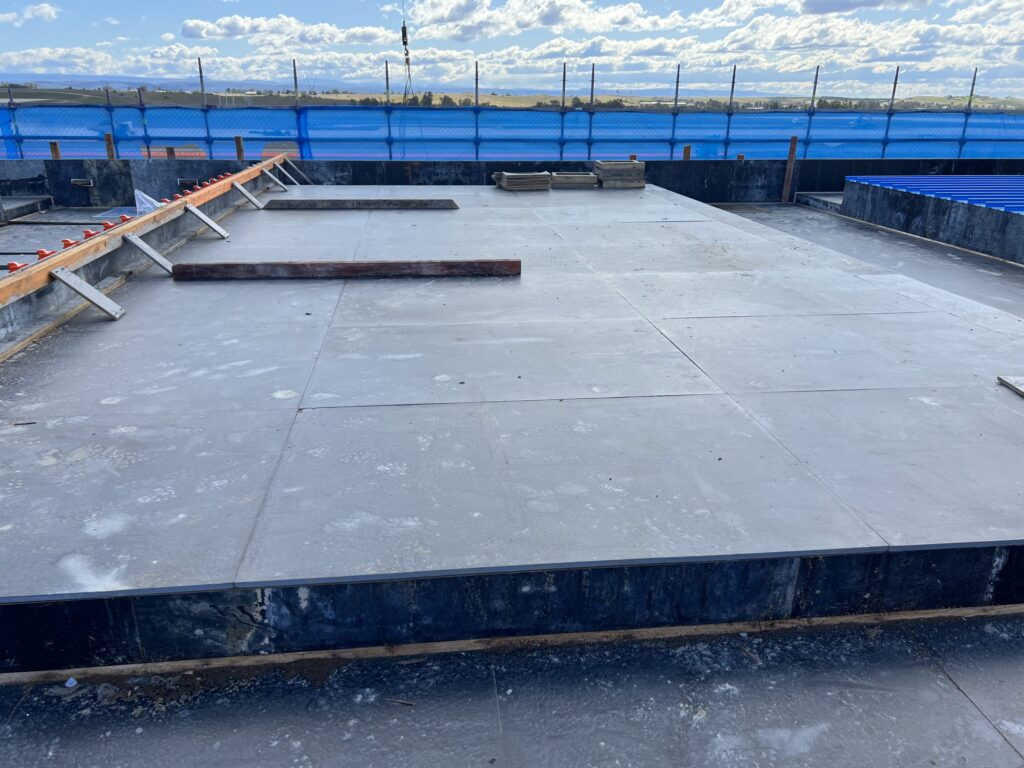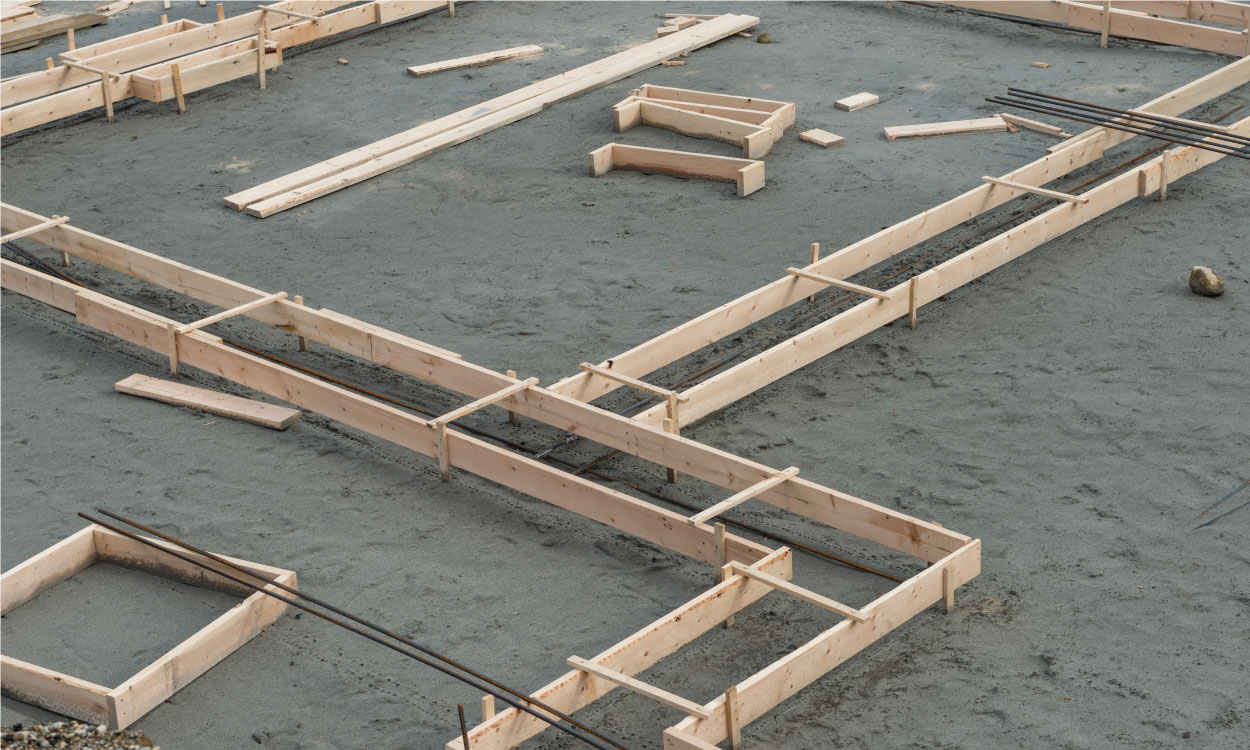In the world of construction, formwork plywood plays a crucial role in ensuring efficient and successful concrete pouring. Whether you are building a small residential project or embarking on a large-scale commercial development, formwork plywood is an essential component that should never be overlooked. Understanding the basics of formwork plywood and its key features is essential for any construction professional looking to achieve exceptional results.
Understanding the Basics of Formwork Plywood
What is Formwork Plywood?
Formwork plywood is a specific type of plywood that is designed for use in constructing formwork systems. Formwork refers to the temporary structure used to support and shape freshly poured concrete until it reaches its desired strength and form. Plywood used for formwork purposes is specially manufactured to withstand the pressure exerted by the concrete and to provide a smooth surface finish.
Formwork plywood is typically made from high-quality veneers that are bonded together with waterproof adhesives. These adhesives ensure that the plywood remains strong and stable, even when exposed to moisture from the concrete. Additionally, the veneers are often treated with special coatings to enhance their resistance to abrasion and prolong the lifespan of the plywood.
Key Features of Formwork Plywood
Formwork plywood possesses several key features that make it an ideal choice for concrete pouring:
- Durability: Formwork plywood is constructed using high-quality materials that ensure its durability and strength. This allows it to withstand the pressure of the wet concrete and remain stable throughout the pouring process.
- Smooth Surface Finish: The plywood’s smooth surface finish ensures that the concrete retains its desired texture and appearance upon completion. This is particularly important for projects that require high-quality finishes, such as architectural structures or exposed concrete elements.
- Dimensional Stability: Formwork plywood is designed to resist warping and shrinkage, even when exposed to moisture and varying weather conditions. This dimensional stability is crucial in maintaining the structural integrity of the formwork system.
Furthermore, formwork plywood is often available in a range of thicknesses and sizes to accommodate different project requirements. The versatility of formwork plywood makes it suitable for various types of formwork applications, including walls, columns, beams, and slabs. Its ease of use and reusability make it a cost-effective solution for construction projects of all scales.

The Role of Formwork Plywood in Concrete Pouring
Facilitating Shape and Structure
One of the primary functions of formwork plywood is to facilitate the creation of the desired shape and structure of the concrete element being poured. The plywood acts as a mold, allowing construction professionals to shape the concrete into the desired form, such as walls, columns, beams, or slabs. It gives them the flexibility to create complex designs and intricate architectural features.
Moreover, formwork plywood comes in various thicknesses and sizes, allowing for customization based on the specific requirements of the project. This versatility enables construction teams to work on a wide range of structures, from small residential projects to large-scale commercial developments. The smooth surface of the plywood also helps achieve a high-quality finish on the concrete, enhancing the overall aesthetics of the final structure. REad more about developments on https://www.decsy.org.uk/about-decsy/what-is-development-education/
Ensuring Stability and Strength
Formwork plywood provides the necessary support and stability to ensure that the concrete maintains its shape until it cures and gains sufficient strength. It prevents the concrete from spreading or sagging, ensuring that it retains its structural integrity. The plywood’s sturdy construction and dimensional stability allow construction professionals to pour concrete at greater heights and with higher levels of complexity.
In addition to stability, formwork plywood also plays a crucial role in enhancing the safety of the construction site. By providing a secure framework for the concrete pour, it reduces the risk of accidents and ensures a controlled environment for the workers. This safety aspect is essential in construction projects where precision and adherence to safety standards are paramount.
The Efficiency of Using Formwork Plywood
Time and Cost Savings
Using formwork plywood can significantly contribute to time and cost savings on construction projects. The plywood panels are reusable, reducing the need for constant material replacements and lowering overall project expenses. Additionally, formwork plywood allows for faster construction progress, as it simplifies the process of creating formwork systems, resulting in shorter turnaround times.
Moreover, the versatility of formwork plywood extends beyond its initial use, as it can be repurposed for various construction needs, such as temporary flooring or shelving, further maximizing its cost-effectiveness over time. This multi-functional aspect of formwork plywood adds value to its efficiency, making it a practical choice for construction projects seeking both economic and environmental benefits.
Quality and Consistency in Concrete Pouring
Quality and consistency are vital factors in concrete pouring. Formwork plywood ensures that the poured concrete maintains a consistent shape and finish, resulting in a uniform appearance throughout the project. The plywood’s smooth surface promotes proper concrete compaction and avoids unwanted air pockets or voids, ensuring the durability and longevity of the structure.
Furthermore, the use of formwork plywood enhances safety on construction sites by providing a stable and reliable framework for concrete pouring. This stability minimizes the risk of structural deformities or accidents during the construction process, emphasizing the importance of using high-quality materials like formwork plywood to uphold industry standards and ensure project success.
Selecting the Right Formwork Plywood for Your Project
Choosing the right formwork plywood for your construction project is crucial to ensure the success and longevity of your structure. With so many options available in the market, it’s important to consider several factors before making a decision.
Factors to Consider
When selecting formwork plywood, there are a few key factors that should be taken into consideration:
- Strength: One of the most important factors to consider is the plywood’s strength. It is essential to ensure that the plywood you choose can withstand the specific concrete loads and pressures anticipated in your project. Using plywood with inadequate strength can compromise the structural integrity of your formwork.
- Dimensional Stability: Another crucial factor is the plywood’s dimensional stability. Opt for plywood that exhibits excellent dimensional stability and resistance to moisture and weathering. This will help prevent warping, swelling, or shrinking, ensuring that your formwork remains in its original shape and size throughout the construction process.
- Surface Finish Requirements: If you have specific surface finish requirements for your project, it’s important to choose plywood with a smooth surface. A smooth surface will help you achieve the desired aesthetics and ensure a flawless finish on your concrete structures.
- Reuse Potential: Assessing the reusability of the plywood panels is crucial to maximize cost savings and minimize waste. Look for plywood that can be easily dismantled and reused for future projects. This not only reduces the environmental impact but also saves you money in the long run.
By carefully considering these factors, you can select the right formwork plywood that meets your project’s specific needs and requirements.
Common Mistakes to Avoid
When working with formwork plywood, it’s important to avoid common mistakes that can lead to unnecessary time and resource wastage. By being aware of these mistakes, you can ensure a smooth construction process:
- Improper Handling: Mishandling formwork plywood can lead to damage or structural weakness. It is crucial to follow proper lifting, storage, and transport practices to maintain the plywood’s integrity. This includes using appropriate lifting equipment, storing the plywood in a dry and secure area, and ensuring careful transportation to the construction site.
- Inadequate Cleaning and Maintenance: Failing to clean and maintain the plywood between uses can result in concrete buildup, reducing its lifespan and affecting subsequent pours. Regular cleaning and inspection are essential for optimal performance. This includes removing any concrete residue, inspecting for any signs of damage or wear, and applying protective coatings if necessary.
- Using Unsuitable Plywood: Choosing plywood that does not meet the project requirements can result in compromised structure and surface finishes. It is crucial to carefully assess the specifications of your project and consult with experts to ensure the right plywood is selected. This includes considering factors such as load-bearing capacity, moisture resistance, and surface smoothness.
By avoiding these common mistakes, you can save valuable time and resources while ensuring the durability and quality of your formwork plywood.

Safety Considerations When Using Formwork Plywood
Handling and Installation Precautions
When working with formwork plywood, it is essential to prioritize safety:
- Protective Gear: Ensure that personnel involved in handling and installation wear appropriate protective gear, such as gloves and safety goggles, to prevent injuries. Click here to learn more about injuries.
- Proper Lifting Techniques: Train workers in proper lifting techniques to prevent strains and back injuries.
- Secure Fastening: Ensure that the plywood panels are secured and adequately fastened to prevent accidental displacement during the concrete pouring process.
Handling and installing formwork plywood requires careful attention to safety measures. By providing workers with the necessary protective gear, such as gloves and safety goggles, construction professionals can minimize the risk of injuries. Additionally, proper training in lifting techniques is crucial to prevent strains and back injuries that can occur when handling heavy plywood panels. It is also essential to ensure that the plywood panels are securely fastened, as any accidental displacement during the concrete pouring process can lead to structural issues and compromise the safety of the construction project.
Maintenance and Inspection Guidelines
Regular maintenance and inspection of formwork plywood are crucial for safety and optimal performance:
- Cleaning: Clean the plywood panels thoroughly after each use, removing any residual concrete and other contaminants.
- Inspection: Regularly inspect the plywood for any signs of damage, including warping, cracks, or delamination. Damaged panels should be repaired or replaced to maintain the safety and effectiveness of the formwork system.
- Storage: Store the plywood in a dry and well-ventilated area to prevent moisture absorption and maintain its dimensional stability.
Maintaining and inspecting formwork plywood is vital to ensure its safety and optimal performance. After each use, it is crucial to clean the plywood panels thoroughly, removing any residual concrete and other contaminants that may affect its integrity. Regular inspections should also be conducted to identify any signs of damage, such as warping, cracks, or delamination. Damaged panels should be promptly repaired or replaced to maintain the safety and effectiveness of the formwork system. Additionally, proper storage in a dry and well-ventilated area is essential to prevent moisture absorption, which can compromise the dimensional stability of the plywood.
Using formwork plywood in concrete pouring is more than just a construction requirement; it is an investment in efficiency, quality, and project success. By understanding the basics of formwork plywood, its role in concrete pouring, and the selection and safety considerations associated with it, construction professionals can ensure smooth and successful construction projects. So, don’t overlook the importance of formwork plywood and its numerous benefits when planning your next concrete pouring endeavor.
Other resources: Tips for Choosing the Right Plywood Formwork for Curved Concrete Structures

